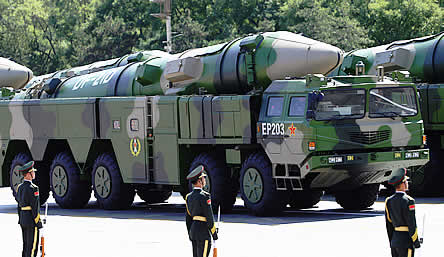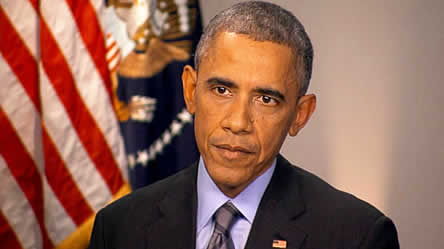|

China's DF-21D ballistic anti-ship "carrier buster" missile.
Photo: economictimes.indiatimes.com
 ome Filipinos say
that the United States and China are moving towards a showdown in the
South China Sea and the Philippines' best course of action is to remain
neutral and get out of the way. ome Filipinos say
that the United States and China are moving towards a showdown in the
South China Sea and the Philippines' best course of action is to remain
neutral and get out of the way.
The United States Navy
has been the dominant power in the Pacific for decades. No other navy
even comes close. But China is rapidly developing a blue water navy of
its own plus sophisticated long-range missile technology that will soon
give the Americans a run for their money.
So far China is still
not up to par militarily with the U.S. so it is biding its time while
rapidly building up its forces and setting up militarily strategic sites
all over the South China Sea. The artificial islands it has created
there can project military power all the way to the Western Pacific. The
runways on many of those man-made islands are not just for civilian
aircraft but for military fighter jets, bombers, military transports,
and air refueling tankers as well.
Preparing for a future
armed confrontation with the United States, China will be playing to
win. In their book "Death by China Confronting the Dragon—A Global Call
to Action" authors Peter Navarro and Greg Autry point to China's growing
arsenal of offensive weapons designed to insure that success:
1. "The Dongfeng (DF)
or 'East Wind' 31A. This is a mobile-launched, long range,
intercontinental ballistic missile (ICBM) that is hard to track, harder
to spot, and more than ready to deliver a 1-megaton nuclear warhead
right to your doorstep."
2. The Jin class
nuclear missile submarine with its Ju Lang-2 ICBMs. "These 'Giant Wave'
missiles can be armed with multiple warheads capable of frying any city
in the United States or Europe" ... or Asia.
3. The "DF-21D
ballistic anti-ship missile—a true naval warfare game changer. It's a
mobile-launched, Mach 10, solid fueled demon expressly designed to drive
America's Pacific Fleet ... right back to the beaches of Hawaii; and
this sudden screaming death has just one target—aircraft supercarriers
like the USS George Washington."
4. China has a
standing army 2.3 million strong. "Its boots on the ground far outnumber
the combined forces of Canada, Germany, the United States and the United
Kingdom."
China's military might
at this stage already appears formidable so it is essential that
Filipinos weight their options carefully. Is the Philippines ready to
appease China by giving up all its claims in the South China Sea (or
West Philippine Sea as we Filipinos prefer to call it) in exchange for
"friendly" relations with its superpower neighbor? Or will it stand on
principle and risk China's wrath?
The United States'
commitment to its 1951 Mutual Defense Treaty with the Philippines is
"ironclad" according to U.S. President Barack Obama. But he leaves
office on January of next year. And besides, where was Obama and his
powerful 7th Fleet during the tense 3-month standoff between the
Philippines and China in Ayungin (Scarborough) Shoal in 2012. The U.S.
stand back then—and probably to this day—is a hands-off approach with
regards to territorial disputes. And after that Obama also made sure he
looked the other way as China built up one artificial island after
another in the Spratlys over a 2-year period. It was only when it became
undeniably clear that China's aim was to deny the U.S. Navy the entire
South China Sea including parts of the Western Pacific, that the Obama
administration finally sat up, took notice and made their now famous
"pivot to Asia."

U.S. President Barack Obama. Photo:
abcnews.go.com
Already, in his last
year in office, Obama is scrambling to undo the effects of his Rip Van
Winkle days of sleeping while the Chinese changed the reality in the
South China Sea. And like the storybook character, Obama appears to now
be taken aback by all the changes that have since occurred in waters
where the U.S. Navy once sailed everywhere uncontested.
For Filipinos, it will
be a tough decision with long-lasting repercussions. Do we let the
Chinese to take what is lawfully ours according to the Law of the Sea
Convention (UNCLOS), in exchange for living in peace and harmony inside
a Chinese sphere of influence? And then hope and pray that they leave us
alone, and not decide to take more islands from us in the future? Or do
we demand what is rightfully ours? This would also mean standing with
the U.S. and its allies against China.
What we Filipinos of
this generation decide might well determine what the Philippines will
look like, and what Filipinos will be like for decades—even centuries—to
come. We are approaching a fork in the road and we will have to choose
which path to take.
Published 3/17/2016 |